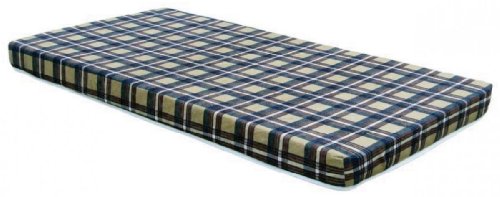BUNK BEDS - What kind? - How big? - Will it Fit?
As families grow, the size of homes and the rooms within these homes generally do not. People find themselves in a space poor environment: too many people, not enough space. Today, although small homes and small rooms still exist, bunk beds have become a tool in the interior decorators bag-of-tricks. They remain a popular choice, not only because of practical considerations, but also because children like them. There continues to be a sense of adventure when the top bunk becomes a choice.
Bunk Bed Mattress
When you sit down to consider your bunk bed options you will be amazed at the number of choices. Each one, depending upon its configuration, will have different measurements (footprint).
So, the first thing is the size of the room and placement of the windows. You also might want to locate and chart where the room heating elements are. If possible, a bed should not be placed next to or over a heating element for oblivious reasons
Next, ensure that when the room is finished that all of the activities to take place inside that room can be accomplished comfortably. Things like game playing, dressing, studying, horse-play, and, of course, sleeping. With this in mind, additional furniture, besides the bed, will be required, such as a dresser, a desk, a computer stand, bookcases etc..
Taking all of these considerations and putting them into a room plan will help you determine the size of the bunk bed you will purchase. Not all bunk beds are the same size. A twin over twin can have a footprint that varies as much as two or three inches in height, two or three inches in width, and four inches in depth. This doesn't sound like much; however, in tight circumstances an inch can be very important.
If the footprint is of little concern, then the selection becomes much larger. So far we have been referring to twin-over-twin, but there is also twin-over-full or full-over-full and even twin-over-futon.
Height is a concern, not only for safety reasons but for space considerations as well. Many times children's rooms are located on the upper floors of a house. The ceilings in these rooms could have a pitch to them that corresponds to the roof line. If the placement of the bunk bed is such that the ceiling reduces or limits access to the top bunk, reassess the location of the bed.
As a general rule, the surface of the top bunk (mattress height) is approximately five and one half feet high. Add eighteen inches for a total of seven feet and use this measurement to determine the minimum ceiling height requirement. You could get away with six and one half feet as a minimum but you might encounter some head bumping.
If, after all of this, a bunk bed will not fit, you should do each step again for platform beds or any other type of bed.







